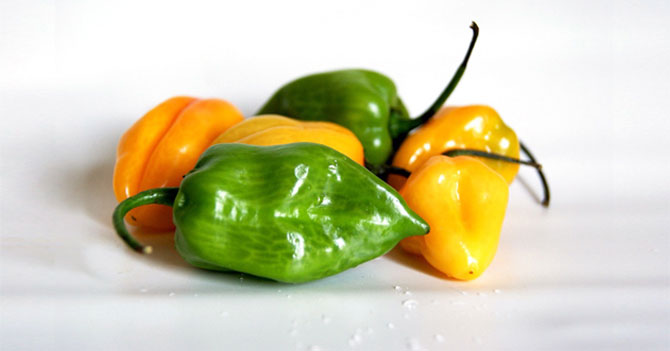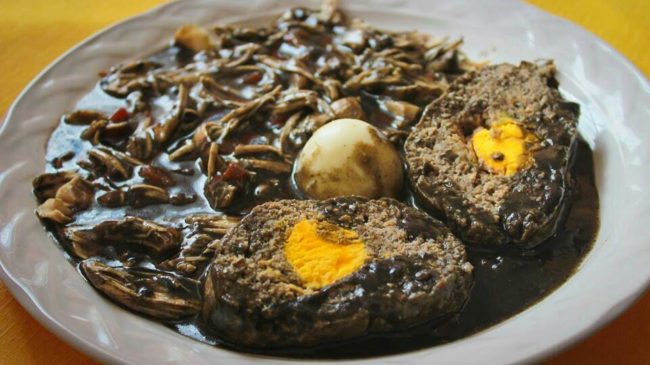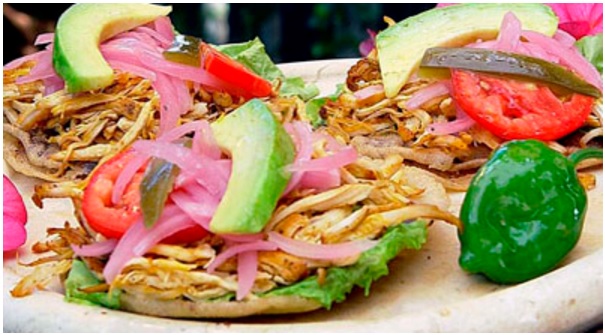Before colonial invasion in the 16th century, the cuisine of the Yucatan peninsula was dominated entirely by traditional Mayan food. Many ingredients that play an important role in Yucatecan cuisinetoday, were not present. Most noticeably, pork, lard, and the Seville orange.
And so the cuisine from the Yucatan Peninsula is a mixture of Mayan food staples and European influences over the past 500 years. The cuisine has developed from what grows here and the styles of cooking by the people here. Today the food scene is hotter then ever! Yucatecan food is different than Mexican food.
INFLUENCE: The exquisite Yucatecan cuisine is based on a mixture of ingredients used by the ancient Maya, which incorporate favors brought from Europe with later contributions from the Caribbean and Middle East.
DIVERSITY: La Cocina Yucateca is recognized in Mexico and around the world. It is largely a result of its former isolation from the rest of the country, and its constant interaction with Europe, Cuba and New Orleans via its ports.
MIXED INGREDIENTS:An exquisite combination of condiments and spices like pumpkin seed, oregano, purple onion, sour orange, achiote, sweet pepper, cilantro, habanero and xcatic peppers, produces famous Yucatecan cuisine.
The delicious Yucatecan cuisine features a variety of scents and colors with dishes ranging from Cochinta Pibil, Panuchos, Salbutes, Poc Chuc, Lime soup, to delicious Relleno Negro and Queso Relleno.
Essentials
Habanero & X’catic chilis
Chilis are endemic to the Americas, and specifically the habanero is the chili of the Yucatan peninsula – from Campeche through Yucatan state and to the Caribbean coast. Archeology suggests they first arose in the Amazon basin and moved through Chile north into central America – but Yucatan is now the biggest producer in the world. Habaneros are wildly spicy and used to heat up many dishes and salsas. Locals sometimes even nibble at raw, whole habaneros as an accompaniment to a meal. Face burn alert!
X’catic is a milder chili from the same family as the banana chili. It’s used to add a little punch to sauces. Sometimes it’s charred and added whole to stews and soups.

Recado
Visit any local market in the Yucatan and you’ll see towers of colour in large pots, that look sort of like paste… These are recados. Spices blended together to form the perfect base for specific Yucatecan dishes. Examples like Recado Negro – A black spice paste that is coloured by dried chilis being charred and then those blackened chilis are ground into the blend. Recado Blanco – made with cumin, ground cilantro seeds, oregano and more.

Relleno Negro (Photo: meridadeyucatan.com)
Achiote (Annatto)
These bright red seeds grow inside a prickly pod. Their powerful colour is used as a dye, as well as the seeds being ground and used to make achiote paste for cooking or to be added to spice blends such as recado rojo. Any Yucatecan dish you see that is bright red or orange was likely made with achiote.
Sour Orange (Seville Orange)
Citrus fruit was not present in the Americas until after colonization. The Seville orange, which is a sour, low sugar version of the regular orange, has become an essential ingredient used in many marinades, drinks, and salsas in the Yucatan.

Pib
A pib is the traditional Mayan oven. It involves digging a hole, filling it with hot coals, and burying the thing you want to cook – often wrapped in banana leaves. This “pit” oven style cooking probably did not originate in Yucatan, it almost certainly existed in Cuba prior to the Yucatan, and can be linked to old world cooking practices. But it has been very much adopted in the Yucatan and we’ll be referring to the pib again later in this article.
Lard
Lard (Rendered Pork Fat) is not a Yucatan specific ingredient, of course, but it should be noted that the rich flavors of many dishes are due to lard being the primary fat used throughout the range of Yucatan Food. Vegetarians may find it difficult to eat traditional Yucatan cuisine in the region.
Now you’re ready to feast on the gastronomic delicacies of the Yucatán!
Buen Provecho!
The Yucatan Times Newsroom

